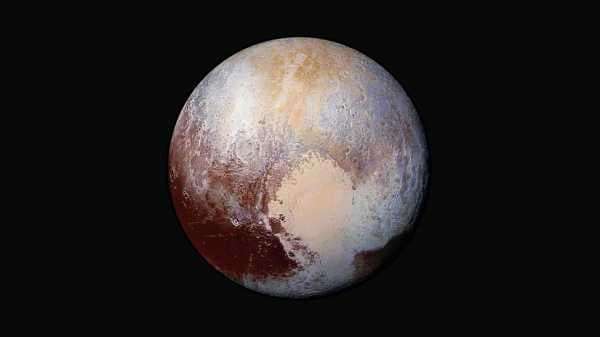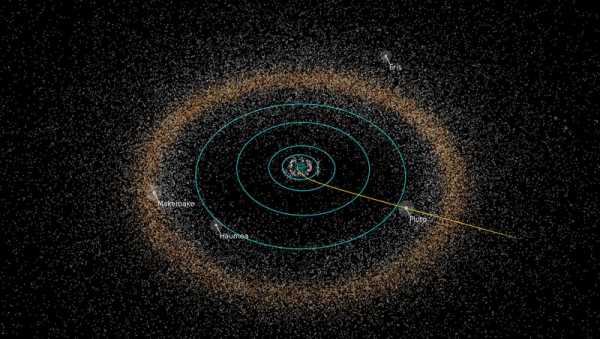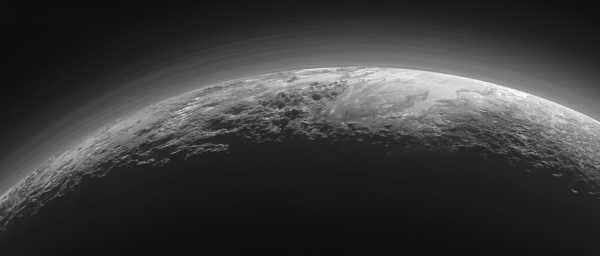
In 2006, Pluto was demoted from a full-fledged planet to a dwarf planet. The reason: Pluto wasn’t special anymore.
Astronomers had discovered many other Pluto-size objects in Pluto’s section of the solar system, called the Kuiper belt. If Pluto was a planet, why wasn’t Eris? Or Haumea or Makemake?
As Vox explained in 2015, there are likely dozens more yet-to-be-discovered Pluto-size objects in the Kuiper belt. That, combined with the fact that Pluto is tiny, closed the case: Pluto was to be known as a dwarf planet.

But then something unexpected happened: Pluto became incredibly fascinating. When the New Horizons spacecraft flew past Pluto in 2015, it showed that it wasn’t just some boring ball of rock and ice at the end of the solar system. It was a geographically dynamic world. Its mostly smooth surface suggests its crust has been constantly reshaping itself, erasing impact craters. Astronomers even speculate there may be a dynamic, slushy sea underneath Pluto’s heart-shaped basin.
“When we see [a world] like Pluto, with its many familiar features — mountains of ice, glaciers of nitrogen, a blue sky with layers of smog — we and our colleagues quite naturally find ourselves using the word ‘planet’ to describe it,” David Grinspoon and Alan Stern, authors of a new book on the New Horizons mission, write in the Washington Post. (Stern was the principal scientific investigator on the New Horizon’s mission. Grinspoon is an astrobiologist and science writer.)
They’re not alone. There’s a small grassroots effort underway among scientists to expand the definition of what a planet is.
“If you don’t call a round world a ‘planet,’ it just falls off people’s mental radar,” Kirby Runyon, a planetary geomorphologist at Johns Hopkins University, told me in a 2017 interview. “There is a psychological power to the word ‘planet’ that helps people realize it’s an important place in space.”
Runyon was a member of the team that analyzed New Horizons’ geologic data during the flyby. “I was blown away by how beautiful and geologically diverse Pluto and its satellite Charon are,” he says. Once he’d seen this side of Pluto, Runyon was bothered that it wasn’t a full-fledged planet anymore.
So Runyon, along with five New Horizons colleagues (including Stern) from different institutions, recently proposed a new definition of a planet that recognizes there are amazing geological features on space objects big and small. And they’ve reignited the debate about Pluto that some other planetary scientists say they wish would just be left alone.
Runyon’s new definition of a planet would mean there are hundreds of planets in our solar system

The solar system is filled with all kinds of intriguing moons and dwarf planets that don’t get attention because they don’t match the official definition used by the International Astronomical Union, which stipulates that a planet:
Among the objects that don’t fit this are Enceladus, a moon of Saturn that spits off huge plumes of water vapor into space. Jupiter’s Ganymede is the ninth-largest object in the solar system. Titan, another moon of Saturn, is the only moon with a dense atmosphere. The definition also doesn’t account for the huge numbers of planets astronomers are discovering outside out solar system. In their Post article, Stern and Grinspoon argue that the official definition makes it so “that essentially all the planets in the universe are not, in fact, planets.”
Like-minded planetary scientists think the IAU definition, especially the third component of it, is vague and unhelpful. Over Christmas 2016, when Runyon was back at his parents’ house in Michigan, he woke up one morning, and wrote down a new, more inclusive definition of what a planet is.
“It was just passion; it was just bubbling up inside me,” he says.
Runyon, along with several prominent science co-authors presented it at the Lunar and Planetary Science Conference in March 2017. Here it is:
Or simpler: “A simple paraphrase of our planet definition — especially suitable for elementary school students — could be, ‘round objects in space that are smaller than stars,’” Runyon and his co-authors write.
That definition would mean the moon is a planet. All round moons in the solar system would be planets. Pluto would be a planet. So would Charon, which orbits it.
This debate over Pluto’s planetary status is unlikely to end anytime soon
In March 2017, Neil deGrasse Tyson responded to Runyon’s proposal on The Late Show With Stephen Colbert. Tyson, a longtime “Pluto is not a planet” advocate — jibed that Pluto sometimes crosses Neptune’s orbit, and that “That’s no kind of behavior for a planet. No!” Meanwhile, other planetary science heavy hitters like Mike Brown, who discovered some of the Kuiper belt objects that kicked Pluto off the planet list, are also not backing down. “Nobody wants the moon to be a planet,” Brown told the CBC. (Indeed, his Twitter handle is still “@plutokiller.”)
But Runyon and his co-authors aren’t calling for the IAU to adopt their definition. They’re hoping to inspire a grassroots movements among planetary scientists and science educators to just start using it.
So under this new definition, how would one describe a round moon? “They are planets that orbit other planets,” Runyon says. “And you can mix and match adjectives. Enceladus could rightly be classified as an icy dwarf satellite planet.”
Isn’t this confusing? In elementary school, kids are taught about the eight planets in the solar system. And sometimes that can be difficult.
“Having 110 or more planets shouldn’t be viewed as a confusion,” he says. Thinking about planets in the new way, he argues, will help students understand the science behind them better. “If you’ve memorized the periodic table, you haven’t learned chemistry.” The new definition would have kids understand the intrinsic scientific properties that make a planet a planet first, and them give them names.
I still think it might be confusing.
But Runyon brings up another possible benefit of teaching kids about more planets, and this I’m more sold on: It’ll stoke their sense of wonder.
“One thing I really want is for [educators], writers, and illustrators of kids’ books on space to become aware of this definition,” he says. “So they can present space in a way kids can see how many places in space there are that they can imagine landing a spacecraft on.”
Sourse: vox.com






